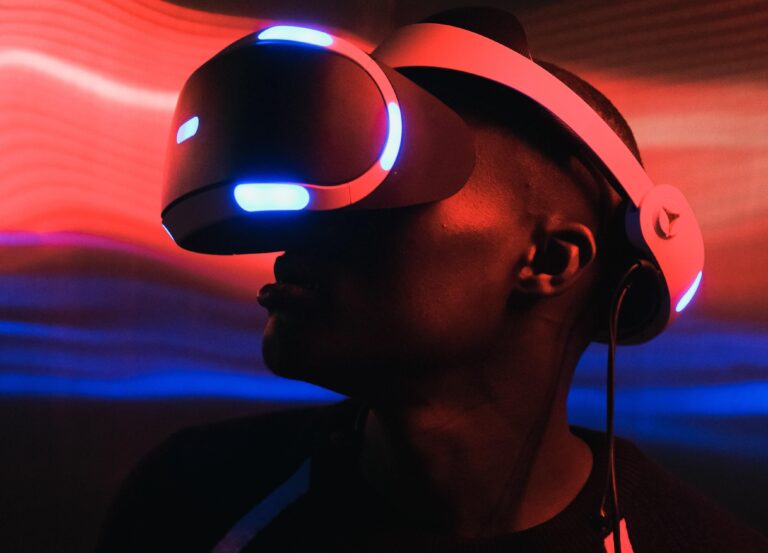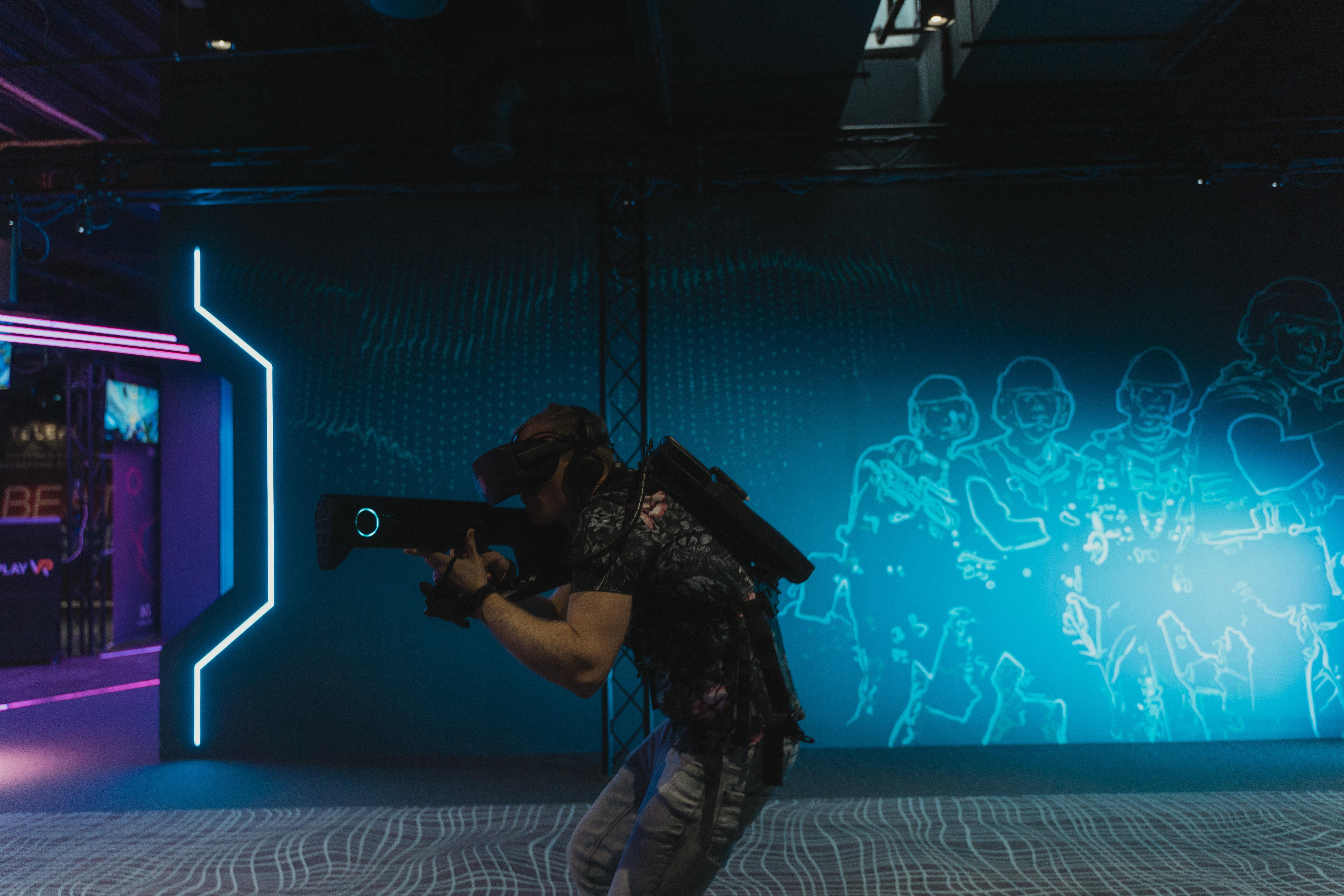How virtual reality works?” Uses of virtual reality ?
February 15, 2023"Exploring the Limitless Possibilities of Virtual Reality: Uses Across Industries"
Introduction Of Virtual Reality
Virtual reality is a rapidly evolving technology that is changing the way we interact with digital content. It is no longer a futuristic concept but a reality that is already transforming various industries. The uses of virtual reality are numerous, and it is becoming increasingly popular as a tool for businesses and organizations to enhance their operations. Here we understand how virtual reality works and uses of virtual reality in different industries.
Let’s Understand How Virtual Reality Works
Virtual reality (VR) works by creating a simulated environment that can be experienced by a user as if it were real. This is achieved through a combination of specialized hardware and software.
Hardware:
The primary piece of hardware in virtual reality is the VR headset. The headset is a wearable device that fits over the user’s eyes, displaying a virtual environment through a set of lenses. The headset may also include integrated headphones or speakers to provide 3D spatial audio. Some headsets also include built-in sensors, such as accelerometers and gyroscopes, which track the user’s head movements to adjust the displayed view.
Other hardware components of a virtual reality system may include hand-held controllers, motion-tracking systems, and cameras. These components enable users to interact with and manipulate the virtual environment and provide input to the VR system.
Software:
The software behind virtual reality creates the simulated environment that the user experiences. This can include 3D modeling and animation tools, game engines, and specialized VR development platforms.
To create a convincing virtual environment, the software must be able to track the user’s movements and adjust the displayed view in real time. This is accomplished through a process called “tracking.” Tracking involves using sensors to detect the position and movement of the user’s head and other body parts and then adjusting the virtual view to match those movements.
The software also needs to provide convincing visual and audio feedback. This can include high-quality graphics, realistic lighting and shadows, and spatial audio that simulates sounds coming from different directions.
Combining Hardware and Software: The combination of hardware and software in virtual reality creates an immersive experience that can trick the user’s senses into believing they are actually in the simulated environment. As the user moves their head or interacts with the virtual environment using hand-held controllers, the software tracks these movements and adjusts the displayed view and audio to match, providing a convincing and engaging experience.
Overall, virtual reality technology is a complex and constantly evolving field, with new hardware and software innovations being developed all the time. As technology advances, it will likely become even more immersive and realistic, opening up new possibilities for how it can be used in a wide range of industries and applications.

Uses Of Virtual Reality
1. Gaming
Gaming is one of the most obvious uses of virtual reality. With virtual reality, gamers can immerse themselves in a completely new world where they can interact with objects and characters in the game. The VR headset and controllers allow the player to feel as if they are actually in the game, making the experience much more engaging and entertaining.
2. Education
Virtual reality has a great potential for use in education. It allows students to learn in an immersive and interactive environment, where they can explore concepts and ideas in a way that traditional teaching methods cannot provide. For instance, virtual reality can be used to take students on virtual field trips, allowing them to explore different parts of the world or even space without leaving the classroom. Additionally, virtual reality can be used to simulate dangerous or inaccessible situations, allowing students to practice and learn critical skills in a safe and controlled environment.
3. Healthcare
Virtual reality is also making a big impact on the healthcare industry. It is being used to train doctors and other medical professionals in a safe and controlled environment, allowing them to practice different procedures and techniques without the risk of harming patients. Additionally, virtual reality can be used to help patients with anxiety and pain management. For example, virtual reality can be used to create a calming environment that can help patients to relax and reduce their anxiety before and during medical procedures.
4. Real Estate
Virtual reality is becoming a game-changer in the real estate industry. It is now possible for potential buyers to take virtual tours of properties without leaving their homes. Virtual reality can help buyers to get a better understanding of the property and its layout, helping them to make more informed decisions about whether to visit the property in person. Additionally, virtual reality can be used to create virtual home staging, allowing potential buyers to see how a property could look with different furniture and decor.
5. Retail
Virtual reality is also transforming the retail industry. With virtual reality, shoppers can try on clothes and accessories without having to physically be in a store. Virtual reality can also be used to create immersive shopping experiences, allowing shoppers to explore different products and interact with them in a virtual environment.
6. Tourism
Virtual reality is also making a big impact on the tourism industry. It is now possible to take virtual tours of different destinations, allowing potential tourists to explore different parts of the world without leaving their homes. Virtual reality can also be used to create immersive travel experiences, allowing tourists to get a taste of the local culture and environment before they visit in person.
Conclusion
Virtual reality is a game-changer that is transforming the way we interact with digital content. From gaming to education, healthcare to real estate, and retail to tourism, the uses of virtual reality are numerous and expanding. As virtual reality continues to evolve, we can expect it to play an even more significant role in various industries.

